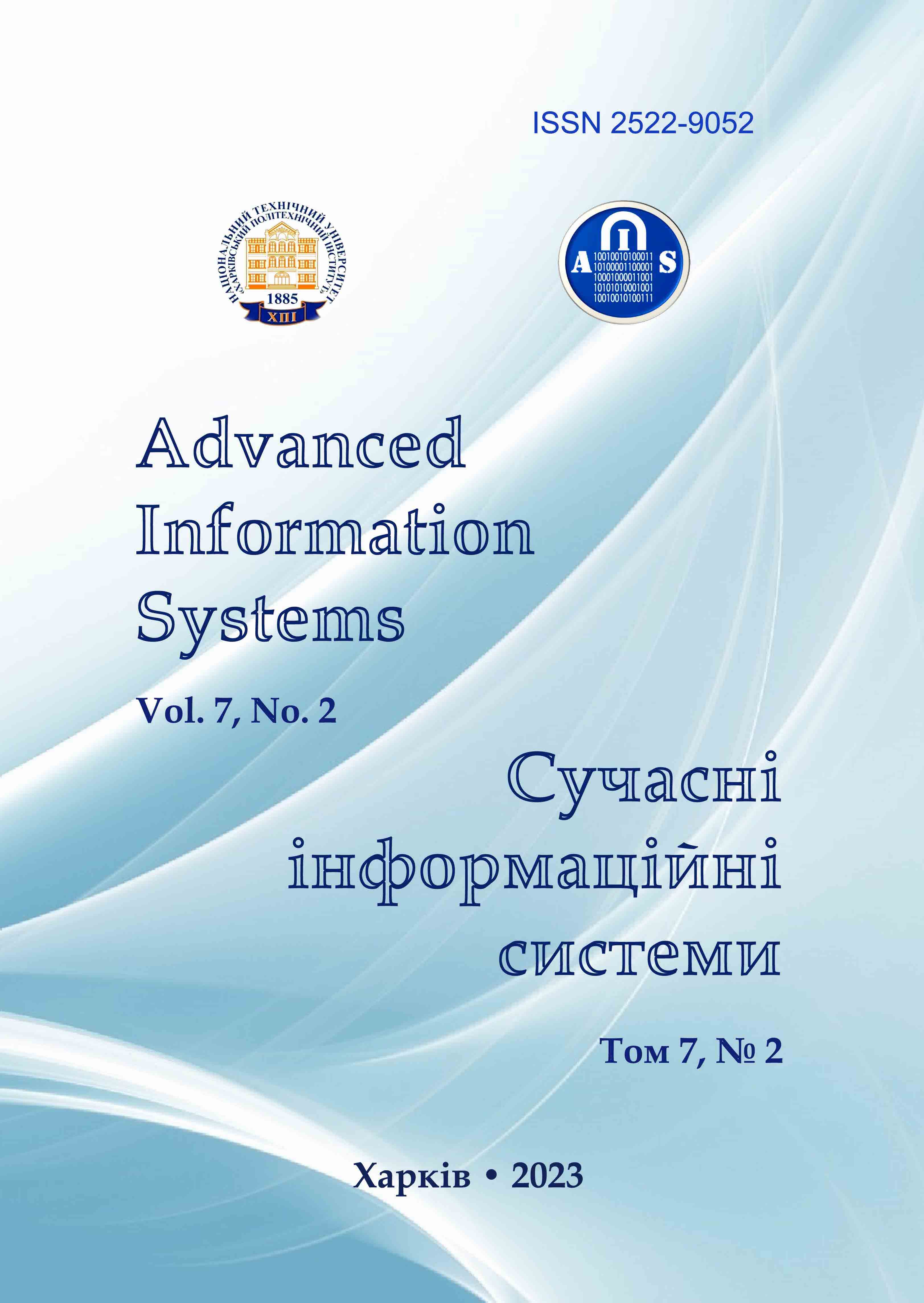The method of assessing and improving the user experience of subscribers in software-configured networks based on the use of machine learning
Main Article Content
Abstract
Evolutionary processes, which primarily affected computer technologies, led to the appearance of several types of computer networks, representing a set of computer devices combined into one system. The main purpose of such a system is user access to shared resources and the ability to exchange data between subscribers during work. Such networks are called software-configurable networks - SDN. SDN networks have long been the basis for building carrier-class telecommunication networks. However, they have a certain number of shortcomings that must be eliminated. The object of the study is the process of evaluating and improving the user experience of subscribers in software-configured networks. The subject of the study is a method of evaluating and improving the user experience of subscribers in software-configured networks based on the use of machine learning. The purpose of the work is to develop a model and a corresponding method for assessing the quality of the user experience of subscribers of SDN networks. As a result of the research, for the first time, a method of evaluating and improving the user experience of subscribers of SDN networks was developed based on the use of machine learning. The method consists in sequentially conducting an automated survey of users, measuring indicators of subscriber service quality, selecting and building a regression model from a set of defined models, and managing the user experience according to the measured parameters of SDN subscriber service quality. The developed method, in contrast to the known ones, makes it possible to improve the quality of the user experience in real time. Conclusions. The research of existing mechanisms for managing the user experience of subscribers and the analysis of regression models for the possibility of using them to establish the relationship between network parameters and user experience allowed to develop a generalized model for evaluating and improving the user experience of subscribers of SDN networks, based on the use of machine learning, and to develop an algorithm works of the method. The developed method makes it possible to build accurate models of the relationship of QoE and QoS parameters and increases the quality of the user experience of subscribers of SDN networks by up to 10%.
Article Details
References
Oleshchenko L.M. (2018), Organization of computer networks, summary of lectures, education. manual for students specialty 121 "Software engineering", specialization "Computer and information search system software", KPI named after Igor Sikorsky, Kyiv, 225 p., available at: https://ela.kpi.ua/handle/123456789/22890.
Porcu, S., Floris, A., Voigt-Antons, J.-N., Atzori, L. and Moller, S. (2020), “Estimation of the Quality of Experience During Video Streaming From Facial Expression and Gaze Direction”, IEEE Trans. Netw. Serv. Manag., Vol. 17, Is. 4, pp. 2702–2716, doi: https://doi.org/10.1109/TNSM.2020.3018303.
Kourtis, M.-A., Liberal, F., Koumaras, H., Xilouris, G. and Trouva, E. (2017), “Exploiting NFV techniques towards future VQA methods”, IEEE 22nd International Workshop on Computer Aided Modeling and Design of Communi-cation Links and Networks (CAMAD), Lund, Sweden, June 2017, doi: https://doi.org/10.1109/CAMAD.2017.8031638.
Kourtis, M.-A., Koumaras, H., Xilouris, G. and Liberal, F. (2017), “An NFVBased Video Quality Assessment Method over 5G Small Cell Networks”, IEEE MultiMedia, vol. 24, pp. 68–78, doi: https://doi.org/10.1109/MMUL.2017.265091534.
Koumaras, H., Kourtis, M., Sakkas, C., Xilouris, G. and Kolometsos, S. (2016), “In-service Video Quality assessment based on SDN/NFV techniques”, 2016 23rd International Conference on Telecommunications (ICT), Thessaloniki, Greece, pp. 1–5, doi: https://doi.org/10.1109/ICT.2016.7500385.
International Telecommunication Union (2012), ITU-R, BT.500.11: Methodology for the subjective assessment of the quality of television pictures, Jan 2012, available at: https://www.itu.int/rec/R-REC-BT.500.
International Telecommunication Union (2008), ITU-T Rec. P.910: Subjective video quality assessment methods for multimedia applications, April 2008, available at: https://www.itu.int/rec/T-REC-P.910.
International Telecommunication Union (2016), “ITU-T Rec. P.913: Methods for the subjective assessment of video quality, audio quality and audiovisual quality of Internet video and distribution quality television in any environ-ment,” March 2016, available at: https://www.itu.int/rec/T-REC-P.913.
Ouali, K., Kassar, M., Nguyen, T. M. T., Sethom, K. and Kervella, B. (2017), “Modeling D2D handover management in 5G cellular networks”, 2017 13th International Wireless Communications and Mobile Computing Conference (IWCMC), available at: https://doi.org/10.1109/IWCMC.2017.7986285.
Makarenko Yu. V. (2019), “The Analysis of the Possibilities of Using 5G Technology in Internet Systems of Things”, Electronic and Acoustic Engineering, vol. 2, no. 2, pp. 45–51, doi: https://doi.org/10.20535/2617-0965.2019.2.2.163355.
Thirupathi, V., Sandeep, C. H., Kumar, N., & Kumar, P. P. (2019), “A comprehensive review on sdn architecture, appli-cations and major benifits of SDN”, International Journal of Advanced Science and Technology, 28(20), pp. 607-614, doi: http://sersc.org/journals/index.php/IJAST/article/view/2854.
Osman, H., Kosmatos, E., Giannopoulou, N. and Odarchenko, R. (2021), First Integrated 5G-TOURS Ecosystem, D7.2, Technical Report. 5G-TOURS - ICT-19-2019 – G.A:856950, available at: https://www.researchgate.net/publication/350725143_First_Integrated_5G-TOURS_Ecosystem_D72.
Mouhouche, B. (2020), 5G-TOURS, D7.1, 5G Experimentation Facilities and Vertical Trials, available at: https://5g-ppp.eu/wp-content/uploads/2020/09/5GTOURs__Vertical_workshop_14102020.pdf.
Tikhvinskiy, V., Bochechka, G., Gryazev, A. and Aitmagambetov, A. (2018), “Comparative Analysis of QoS Manage-ment and Technical Requirements in 3GPP Standards for Cellular IoT Technologies”, Journal of Telecommunications and Information Technology, vol. 2(2), pp. 41–47, doi: https://doi.org/10.26636/jtit.2018.122717.
